Premium Only Content
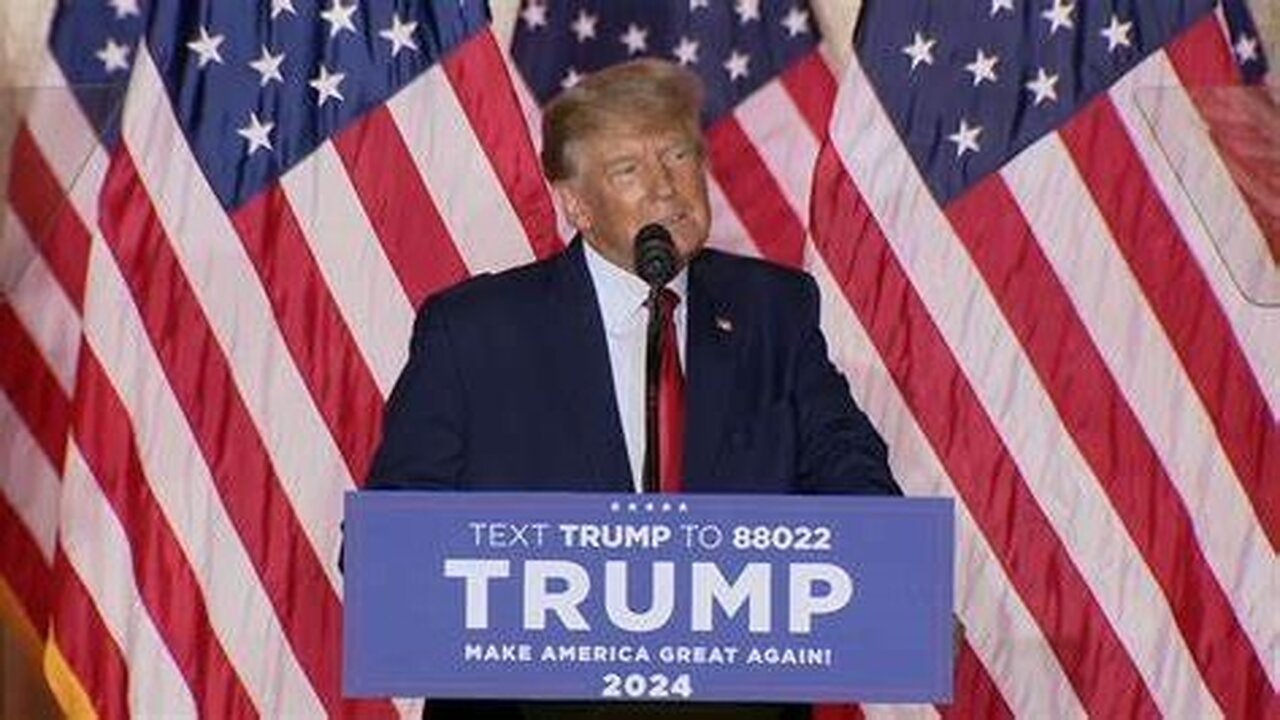
Donald Trump talk about Joe Bidens mental catastrophe, FBI, world war 3 // Jan 12, 2024
Donald John Trump (born June 14, 1946) is an American politician, media personality, and businessman who served as the 45th president of the United States from 2017 to 2021.
Trump received a Bachelor of Science in economics from the University of Pennsylvania in 1968, and his father named him president of his real estate business in 1971. Trump renamed it the Trump Organization and reoriented the company toward building and renovating skyscrapers, hotels, casinos, and golf courses. After a series of business failures in the late twentieth century, he successfully launched side ventures that required little capital, mostly by licensing the Trump name. From 2004 to 2015, he co-produced and hosted the reality television series The Apprentice. He and his businesses have been plaintiff or defendant in more than 4,000 state and federal legal actions, including six business bankruptcies.
Trump won the 2016 presidential election as the Republican Party nominee against Democratic Party nominee Hillary Clinton while losing the popular vote.[a] During the campaign, his political positions were described as populist, protectionist, isolationist, and nationalist. His election and policies sparked numerous protests. He was the first U.S. president with no prior military or government experience. The 2017–2019 special counsel investigation established that Russia had interfered in the 2016 election to favor Trump's campaign. Trump promoted conspiracy theories and made many false and misleading statements during his campaigns and presidency, to a degree unprecedented in American politics. Many of his comments and actions have been characterized as racially charged or racist and many as misogynistic.
As president, Trump ordered a travel ban on citizens from several Muslim-majority countries, diverted military funding toward building a wall on the U.S.-Mexico border, and implemented a policy of family separations for migrants detained at the U.S. border. He weakened environmental protections, rolling back more than 100 environmental policies and regulations. He signed the Tax Cuts and Jobs Act of 2017, which cut taxes for individuals and businesses and rescinded the individual health insurance mandate penalty of the Affordable Care Act. He appointed Neil Gorsuch, Brett Kavanaugh, and Amy Coney Barrett to the U.S. Supreme Court. He reacted slowly to the COVID-19 pandemic, ignored or contradicted many recommendations from health officials, used political pressure to interfere with testing efforts, and spread misinformation about unproven treatments. Trump initiated a trade war with China and withdrew the U.S. from the proposed Trans-Pacific Partnership trade agreement, the Paris Agreement on climate change, and the Iran nuclear deal. He met with North Korean leader Kim Jong Un three times but made no progress on denuclearization.
Trump refused to concede after losing the 2020 presidential election to Joe Biden, falsely claiming widespread electoral fraud, and attempted to overturn the results by pressuring government officials, mounting scores of unsuccessful legal challenges, and obstructing the presidential transition. On January 6, 2021, he urged his supporters to march to the U.S. Capitol, which many of them then attacked, resulting in multiple deaths and interrupting the electoral vote count.
Trump is the only American president to have been impeached twice. After he tried to pressure Ukraine in 2019 to investigate Biden, he was impeached by the House of Representatives for abuse of power and obstruction of Congress; he was acquitted by the Senate in February 2020. The House impeached him again in January 2021, for incitement of insurrection, and the Senate acquitted him in February. Scholars and historians rank Trump as one of the worst presidents in American history.[1][2]
Since leaving office, Trump has remained the de facto leader of the Republican Party and is a candidate in the 2024 Republican presidential primaries. In 2023, a civil trial jury found that Trump sexually abused E. Jean Carroll. He was also indicted in New York on 34 felony counts of falsifying business records, in Florida on 40 felony counts related to his mishandling of classified documents, in Washington, D.C., on four felony counts of conspiracy and obstruction for efforts to overturn the 2020 presidential election, and in Georgia on 13 charges of racketeering and other alleged felonies committed in an effort to overturn the state's 2020 election results. Trump pleaded not guilty to all charges.
Personal life
Early life
A black-and-white photograph of Donald Trump as a teenager, smiling, wearing a dark pseudo-military uniform with various badges and a light-colored stripe crossing his right shoulder
Trump at the New York Military Academy in 1964
Donald John Trump was born on June 14, 1946, at Jamaica Hospital in Queens, New York City,[3] the fourth child of Fred Trump, a Bronx-born real estate developer whose parents were German immigrants, and Mary Anne MacLeod Trump, an immigrant from Scotland. Trump grew up with older siblings Maryanne, Fred Jr., and Elizabeth and younger brother Robert in the Jamaica Estates neighborhood of Queens, and attended the private Kew-Forest School from kindergarten through seventh grade.[4][5][6] At age 13, he was enrolled at the New York Military Academy, a private boarding school,[7] and, in 1964, he enrolled at Fordham University. Two years later, he transferred to the Wharton School of the University of Pennsylvania, graduating in May 1968 with a Bachelor of Science in economics.[8][9] In 2015, Trump's lawyer Michael Cohen threatened Trump's colleges, high school, and the College Board with legal action if they released Trump's academic records.[10]
While in college, Trump obtained four student draft deferments during the Vietnam War era.[11] In 1966, he was deemed fit for military service based upon a medical examination, and in July 1968, a local draft board classified him as eligible to serve.[12] In October 1968, he was classified 1-Y, a conditional medical deferment,[13] and in 1972, he was reclassified 4-F due to bone spurs, permanently disqualifying him from service.[14]
Family
Main article: Family of Donald Trump
In 1977, Trump married Czech model Ivana Zelníčková.[15] They had three children: Donald Jr. (born 1977), Ivanka (born 1981), and Eric (born 1984). Ivana became a naturalized United States citizen in 1988.[16] The couple divorced in 1990, following Trump's affair with actress Marla Maples.[17] Trump and Maples married in 1993 and divorced in 1999. They have one daughter, Tiffany (born 1993), who was raised by Marla in California.[18] In 2005, Trump married Slovenian model Melania Knauss.[19] They have one son, Barron (born 2006).[20] Melania gained U.S. citizenship in 2006.[21]
Religion
Trump went to Sunday school and was confirmed in 1959 at the First Presbyterian Church in Jamaica, Queens.[22][23] In the 1970s, his parents joined the Marble Collegiate Church in Manhattan, which belongs to the Reformed Church in America.[22][24] The pastor at Marble, Norman Vincent Peale,[22] ministered to the family until his death in 1993.[24] Trump has described him as a mentor.[25] In 2015, the church stated that Trump was not an active member.[23] In 2019, he appointed his personal pastor, televangelist Paula White, to the White House Office of Public Liaison.[26] In 2020, he said he identified as a non-denominational Christian.[27]
Health habits
Trump has called golfing his "primary form of exercise" but usually does not walk the course.[28] He considers exercise a waste of energy because he believes exercise depletes the body's energy "like a battery, with a finite amount of energy".[29] In 2015, Trump's campaign released a letter from his longtime personal physician, Harold Bornstein, stating that Trump would "be the healthiest individual ever elected to the presidency".[30] In 2018, Bornstein said Trump had dictated the contents of the letter and that three Trump agents had seized his medical records in a February 2017 raid on the doctor's office.[30][31]
Wealth
Main article: Wealth of Donald Trump
Ivana Trump and King Fahd shake hands, with Ronald Reagan standing next to them smiling. All are in black formal attire.
Trump (far right) and wife Ivana in the receiving line of a state dinner for King Fahd of Saudi Arabia in 1985, with U.S. president Ronald Reagan and First Lady Nancy Reagan
In 1982, Trump made the initial Forbes list of wealthy people for holding a share of his family's estimated $200 million net worth (equivalent to $606 million in 2022).[32] His losses in the 1980s dropped him from the list between 1990 and 1995.[33] After filing the mandatory financial disclosure report with the FEC in July 2015, he announced a net worth of about $10 billion. Records released by the FEC showed at least $1.4 billion in assets and $265 million in liabilities.[34] Forbes estimated his net worth dropped by $1.4 billion between 2015 and 2018.[35] In their 2021 billionaires ranking, Trump's net worth was estimated to be $2.4 billion (1,299th in the world).[36]
Journalist Jonathan Greenberg reported that Trump called him in 1984, pretending to be a fictional Trump Organization official named "John Barron". Greenberg said that Trump, speaking as "Barron", falsely asserted that he owned more than 90 percent of his father's business to get a higher ranking for himself on the Forbes 400 list of wealthy Americans. Greenberg also wrote that Forbes had vastly overestimated Trump's wealth and wrongly included him on the Forbes 400 rankings of 1982, 1983, and 1984.[37]
Trump has often said he began his career with "a small loan of one million dollars" from his father and that he had to pay it back with interest.[38] He was a millionaire by age eight, borrowed at least $60 million from his father, largely failed to repay those loans, and received another $413 million (2018 dollars adjusted for inflation) from his father's company.[39][40] In 2018, he and his family were reported to have committed tax fraud, and the New York State Department of Taxation and Finance started an investigation.[40] His investments underperformed the stock and New York property markets.[41][42] Forbes estimated in October 2018 that his net worth declined from $4.5 billion in 2015 to $3.1 billion in 2017 and his product-licensing income from $23 million to $3 million.[43]
Contrary to his claims of financial health and business acumen, Trump's tax returns from 1985 to 1994 show net losses totaling $1.17 billion. The losses were higher than those of almost every other American taxpayer. The losses in 1990 and 1991, more than $250 million each year, were more than double those of the nearest taxpayers. In 1995, his reported losses were $915.7 million (equivalent to $1.76 billion in 2022).[44][45][32]
In 2020, the New York Times obtained Trump's tax information extending over two decades. Its reporters found that Trump reported losses of hundreds of millions of dollars and had, since 2010, deferred declaring $287 million in forgiven debt as taxable income. His income mainly came from his share in The Apprentice and businesses in which he was a minority partner, and his losses mainly from majority-owned businesses. Much income was in tax credits for his losses, which let him avoid annual income tax payments or lower them to $750. During the 2010s, Trump balanced his businesses' losses by selling and borrowing against assets, including a $100 million mortgage on Trump Tower (due in 2022) and the liquidation of over $200 million in stocks and bonds. He personally guaranteed $421 million in debt, most of which is due by 2024.[46]
As of October 2021, Trump had over $1.3 billion in total debts, much of which is secured by his assets.[47] In 2020, he owed $640 million to banks and trust organizations, including Bank of China, Deutsche Bank, and UBS, and approximately $450 million to unknown creditors. The value of his assets exceeds his debt.[48]
Business career
Main article: Business career of Donald Trump
Further information: Business projects of Donald Trump in Russia
Real estate
Exterior ground view of Trump tower, a contemporary skyscraper with a glass curtain and stepped façade
Trump Tower in Midtown Manhattan
Starting in 1968, Trump was employed at his father's real estate company, Trump Management, which owned racially segregated middle-class rental housing in New York City's outer boroughs.[49][50] In 1971, he became president of the company and began using the Trump Organization as an umbrella brand.[51] Between 1991 and 2009, he filed for Chapter 11 bankruptcy protection for six of his businesses, the Plaza Hotel in Manhattan, the casinos in Atlantic City, New Jersey, and the Trump Hotels & Casino Resorts company.[52]
Manhattan developments
Trump attracted public attention in 1978 with the launch of his family's first Manhattan venture, the renovation of the derelict Commodore Hotel, adjacent to Grand Central Terminal.[53] The financing was facilitated by a $400 million city property tax abatement arranged for Trump by his father who also, jointly with Hyatt, guaranteed a $70 million bank construction loan.[50][54] The hotel reopened in 1980 as the Grand Hyatt Hotel,[55] and that same year, Trump obtained rights to develop Trump Tower, a mixed-use skyscraper in Midtown Manhattan.[56] The building houses the headquarters of the Trump Corporation and Trump's PAC and was Trump's primary residence until 2019.[57][58]
In 1988, Trump acquired the Plaza Hotel with a loan from a consortium of sixteen banks.[59] The hotel filed for bankruptcy protection in 1992, and a reorganization plan was approved a month later, with the banks taking control of the property.[60] In 1995, Trump defaulted on over $3 billion of bank loans, and the lenders seized the Plaza Hotel along with most of his other properties in a humiliating restructuring that allowed Trump to avoid personal bankruptcy.[61][62] The lead bank's attorney said of the banks' decision that they "all agreed that he'd be better alive than dead."[62]
In 1996, Trump acquired the mostly vacant 71-story skyscraper at 40 Wall Street, later rebranded as the Trump Building, and renovated it.[63] In the early 1990s, Trump won the right to develop a 70-acre (28 ha) tract in the Lincoln Square neighborhood near the Hudson River. Struggling with debt from other ventures in 1994, Trump sold most of his interest in the project to Asian investors, who were able to finance the project's completion, Riverside South.[64]
Atlantic City casinos
The entrance of the Trump Taj Mahal, a casino in Atlantic City. It has motifs evocative of the Taj Mahal in India.
Entrance of the Trump Taj Mahal in Atlantic City
In 1984, Trump opened Harrah's at Trump Plaza, a hotel and casino, with financing and management help from the Holiday Corporation.[65] It was unprofitable, and Trump paid Holiday $70 million in May 1986 to take sole control.[66] In 1985, Trump bought the unopened Atlantic City Hilton Hotel and renamed it Trump Castle.[67] His wife Ivana managed it until 1988.[68] Both casinos filed for Chapter 11 bankruptcy protection in 1992.[69]
Trump bought a third Atlantic City venue in 1988, the Trump Taj Mahal. It was financed with $675 million in junk bonds and completed for $1.1 billion, opening in April 1990.[70][71] Trump filed for Chapter 11 bankruptcy protection in 1991. Under the provisions of the restructuring agreement, Trump gave up half his initial stake and personally guaranteed future performance.[72] To reduce his $900 million of personal debt, he sold the Trump Shuttle airline; his megayacht, the Trump Princess, which had been leased to his casinos and kept docked; and other businesses.[73]
In 1995, Trump founded Trump Hotels & Casino Resorts (THCR), which assumed ownership of the Trump Plaza.[74] THCR purchased the Taj Mahal and the Trump Castle in 1996 and went bankrupt in 2004 and 2009, leaving Trump with 10 percent ownership.[65] He remained chairman until 2009.[75]
Mar-a-Lago
Main article: Mar-a-Lago
In 1985, Trump acquired the Mar-a-Lago estate in Palm Beach, Florida.[76] In 1995, he converted the estate into a private club with an initiation fee and annual dues. He continued to use a wing of the house as a private residence.[77] In 2019, Trump declared Mar-a-Lago his primary residence.[58]
Golf courses
Main article: Donald Trump and golf
The Trump Organization began building and buying golf courses in 1999.[78] It owns fourteen and manages another three Trump-branded courses worldwide.[78][79]
Trump visited a Trump Organization property on 428 (nearly one in three) of the 1,461 days of his presidency and is estimated to have played 261 rounds of golf, one every 5.6 days.[80]
Licensing of the Trump brand
See also: List of things named after Donald Trump
The Trump name has been licensed for various consumer products and services, including foodstuffs, apparel, adult learning courses, and home furnishings.[81][82] According to an analysis by The Washington Post, there are more than 50 licensing or management deals involving Trump's name, and they have generated at least $59 million in revenue for his companies.[83] By 2018, only two consumer goods companies continued to license his name.[81]
Side ventures
Trump, Doug Flutie, and an unnamed official standing behind a lectern with big, round New Jersey Generals sign, with members of the press seated in the background
Trump and New Jersey Generals quarterback Doug Flutie at a 1985 press conference in the lobby of Trump Tower
In September 1983, Trump purchased the New Jersey Generals, a team in the United States Football League. After the 1985 season, the league folded, largely due to Trump's strategy of moving games to a fall schedule (when they competed with the NFL for audience) and trying to force a merger with the NFL by bringing an antitrust suit against the organization.[84][85]
Trump's businesses have hosted several boxing matches at the Atlantic City Convention Hall, adjacent to and promoted as taking place at the Trump Plaza in Atlantic City.[86][87] In 1989 and 1990, Trump lent his name to the Tour de Trump cycling stage race, which was an attempt to create an American equivalent of European races such as the Tour de France or the Giro d'Italia.[88]
From 1986 to 1988, Trump purchased significant blocks of shares in various public companies while suggesting that he intended to take over the company and then sold his shares for a profit,[44] leading some observers to think he was engaged in greenmail.[89] The New York Times found that Trump initially made millions of dollars in such stock transactions, but later "lost most, if not all, of those gains after investors stopped taking his takeover talk seriously".[44]
In 1988, Trump purchased the Eastern Air Lines Shuttle, financing the purchase with $380 million (equivalent to $940 million in 2022)[32] in loans from a syndicate of 22 banks. He renamed the airline Trump Shuttle and operated it until 1992.[90] Trump defaulted on his loans in 1991, and ownership passed to the banks.[91] The airline was eventually sold to US Airways.[90]
A red star with a bronze outline and "Donald Trump" and a TV icon written on it in bronze, embedded in a black terrazzo sidewalk
Trump's star on the Hollywood Walk of Fame
In 1992, Trump, his siblings Maryanne, Elizabeth, and Robert, and his cousin John W. Walter, each with a 20 percent share, formed All County Building Supply & Maintenance Corp. The company had no offices and is alleged to have been a shell company for paying the vendors providing services and supplies for Trump's rental units, then billing those services and supplies to Trump Management with markups of 20–50 percent and more. The owners shared the proceeds generated by the markups.[40][92] The increased costs were used as justification to get state approval for increasing the rents of Trump's rent-stabilized units.[40]
From 1996 to 2015, Trump owned all or part of the Miss Universe pageants, including Miss USA and Miss Teen USA.[93][94] Due to disagreements with CBS about scheduling, he took both pageants to NBC in 2002.[95][96] In 2007, Trump received a star on the Hollywood Walk of Fame for his work as producer of Miss Universe.[97] NBC and Univision dropped the pageants from their broadcasting lineups in June 2015.[98]
Trump University
Main article: Trump University
In 2004, Trump co-founded Trump University, a company that sold real estate training courses priced from $1,500 to $35,000.[99] After New York State authorities notified the company that its use of the word "university" violated state law (as it was not an academic institution), its name was changed to the Trump Entrepreneur Initiative in 2010.[100]
In 2013, the State of New York filed a $40 million civil suit against Trump University, alleging that the company made false statements and defrauded consumers.[101] In addition, two class actions were filed in federal court against Trump and his companies. Internal documents revealed that employees were instructed to use a hard-sell approach, and former employees testified that Trump University had defrauded or lied to its students.[102][103][104] Shortly after he won the 2016 presidential election, Trump agreed to pay a total of $25 million to settle the three cases.[105]
Foundation
Main article: Donald J. Trump Foundation
The Donald J. Trump Foundation was a private foundation established in 1988.[106][107] In the foundation's final years, its funds mostly came from donors other than Trump, who did not donate any personal funds to the charity from 2009 until 2014.[108] The foundation gave to health-care- and sports-related charities, as well as conservative groups.[109]
In 2016, The Washington Post reported that the charity committed several potential legal and ethical violations, including alleged self-dealing and possible tax evasion.[110] Also in 2016, the New York Attorney General determined the foundation to be in violation of state law for soliciting donations and ordered it to immediately cease its fundraising activities in New York.[111] Trump's team announced in December 2016 that the foundation would be dissolved.[112]
In June 2018, the New York attorney general's office filed a civil suit against the foundation, Trump, and his adult children, seeking $2.8 million in restitution and additional penalties.[113][114] In December 2018, the foundation ceased operation and disbursed its assets to other charities.[115] In November 2019, a New York state judge ordered Trump to pay $2 million to a group of charities for misusing the foundation's funds, in part to finance his presidential campaign.[116][117]
Legal affairs and bankruptcies
Main article: Legal affairs of Donald Trump
Roy Cohn was Trump's fixer, lawyer, and mentor for 13 years in the 1970s and 1980s.[118] According to Trump, Cohn sometimes waived fees due to their friendship.[118] In 1973, Cohn helped Trump countersue the United States government for $100 million (equivalent to $659 million in 2022)[32] over its charges that Trump's properties had racial discriminatory practices. Trump's counterclaims were dismissed, and the government's case went forward, ultimately resulting in a settlement.[119] In 1975, an agreement was struck requiring Trump's properties to furnish the New York Urban League with a list of all apartment vacancies, every week for two years, among other things.[120] Cohn introduced political consultant Roger Stone to Trump, who enlisted Stone's services to deal with the federal government.[121]
According to a review of state and federal court files conducted by USA Today in 2018, Trump and his businesses had been involved in more than 4,000 state and federal legal actions.[122] While Trump has not filed for personal bankruptcy, his over-leveraged hotel and casino businesses in Atlantic City and New York filed for Chapter 11 bankruptcy protection six times between 1991 and 2009.[123] They continued to operate while the banks restructured debt and reduced Trump's shares in the properties.[123]
During the 1980s, more than 70 banks had lent Trump $4 billion.[124] After his corporate bankruptcies of the early 1990s, most major banks, with the exception of Deutsche Bank, declined to lend to him.[125] After the January 6 United States Capitol attack, the bank decided not to do business with Trump or his company in the future.[126]
Media career
Main article: Media career of Donald Trump
Books
Main article: Bibliography of Donald Trump
Using ghostwriters, Trump has produced up to 19 books on business, financial, or political topics under his name.[127] His first book, The Art of the Deal (1987), was a New York Times Best Seller. While Trump was credited as co-author, the entire book was written by Tony Schwartz.[128] According to The New Yorker, "The book expanded Trump's renown far beyond New York City, making him an emblem of the successful tycoon."[128] Trump has called the volume his second favorite book, after the Bible.[129]
Film and television
Main article: Media career of Donald Trump
Trump made cameo appearances in many films and television shows from 1985 to 2001.[130]
Trump had a sporadic relationship with the professional wrestling promotion WWE since the late 1980s.[131] He appeared at WrestleMania 23 in 2007 and was inducted into the celebrity wing of the WWE Hall of Fame in 2013.[132]
Trump, in a suit, sits in a crowded baseball stadium
Trump at a New York Mets baseball game in 2009
Starting in the 1990s, Trump was a guest about 24 times on the nationally syndicated Howard Stern Show.[133] He also had his own short form talk radio program called Trumped! (one to two minutes on weekdays) from 2004 to 2008.[134][135] From 2011 until 2015, he was a weekly unpaid guest commentator on Fox & Friends.[136][137]
From 2004 to 2015, Trump was co-producer and host of reality shows The Apprentice and The Celebrity Apprentice. Trump played a flattering, highly fictionalized version of himself as a superrich and successful chief executive who eliminated contestants with the catchphrase "You're fired". The shows remade his image for millions of viewers nationwide.[138][139] With the related licensing agreements, they earned him more than $400 million which he invested in largely unprofitable businesses.[140]
In February 2021, Trump resigned from the Screen Actors Guild he had been a member of since 1989 rather than face a disciplinary committee hearing for inciting the January 6, 2021, mob attack on the U.S. Capitol and for his "reckless campaign of misinformation aimed at discrediting and ultimately threatening the safety of journalists".[141] Two days later, the union permanently barred him from readmission.[142]
Political career
Further information: Political career of Donald Trump
Donald Trump shakes hands with Bill Clinton in a lobby; Trump is speaking and Clinton is smiling, and both are wearing suits.
Trump and President Bill Clinton in June 2000
Trump's political party affiliation has changed numerous times. He registered as a Republican in 1987;[143] a member of the Independence Party, the New York state affiliate of the Reform Party, in 1999;[144] a Democrat in 2001; a Republican in 2009; unaffiliated in 2011; and a Republican in 2012.[143]
In 1987, Trump placed full-page advertisements in three major newspapers,[145] expressing his views on foreign policy and on how to eliminate the federal budget deficit.[146] He ruled out running for local office but not for the presidency.[145] In 1988, he approached Lee Atwater, asking to be put into consideration to be Republican nominee George H. W. Bush's running mate. Bush found the request "strange and unbelievable".[147]
Presidential campaigns (2000–2016)
In 2000, Trump ran in the California and Michigan primaries for nomination as the Reform Party candidate for the 2000 United States presidential election but withdrew from the race in February 2000.[148][149][150] A July 1999 poll matching him against likely Republican nominee George W. Bush and likely Democratic nominee Al Gore showed Trump with seven percent support.[151]
Trump, leaning heavily onto a lectern, with his mouth open mid-speech and a woman clapping politely next to him
Trump speaking at CPAC 2011
In 2011, Trump speculated about running against President Barack Obama in the 2012 election, making his first speaking appearance at the Conservative Political Action Conference (CPAC) in February 2011 and giving speeches in early primary states.[152][153] In May 2011, he announced he would not run,[152] and he endorsed Mitt Romney in February 2012.[154] Trump's presidential ambitions were generally not taken seriously at the time.[155]
2016 presidential campaign
Main article: Donald Trump 2016 presidential campaign
Further information: 2016 Republican Party presidential primaries and 2016 United States presidential election § General election campaign
Trump's fame and provocative statements earned him an unprecedented amount of free media coverage, elevating his standing in the Republican primaries.[156] He adopted the phrase "truthful hyperbole", coined by his ghostwriter Tony Schwartz, to describe his public speaking style.[128][157] His campaign statements were often opaque and suggestive,[158] and a record number of them were false.[159][160][161] The Los Angeles Times wrote, "Never in modern presidential politics has a major candidate made false statements as routinely as Trump has."[162][163] Trump said he disdained political correctness and frequently made claims of media bias.[164][165]
Trump speaking in front of an American flag behind a lectern, wearing a black suit and red hat. The lectern sports a blue "TRUMP" sign.
Trump campaigning in Arizona, March 2016
Trump announced his candidacy in June 2015.[166][167] His campaign was initially not taken seriously by political analysts, but he quickly rose to the top of opinion polls.[168] He became the front-runner in March 2016[169] and was declared the presumptive Republican nominee in May.[170]
Hillary Clinton led Trump in national polling averages throughout the campaign, but, in early July, her lead narrowed.[171][172] In mid-July Trump selected Indiana governor Mike Pence as his vice presidential running mate,[173] and the two were officially nominated at the 2016 Republican National Convention.[174] Trump and Clinton faced off in three presidential debates in September and October 2016. Trump twice refused to say whether he would accept the result of the election.[175]
Campaign rhetoric and political positions
Main article: Political positions of Donald Trump
Trump's political positions and his rhetoric were right-wing populist.[176][177][178] Politico described them as "eclectic, improvisational and often contradictory", quoting a health-care policy expert at the American Enterprise Institute as saying that his political positions were "a total random assortment of whatever plays publicly".[179] NBC News counted "141 distinct shifts on 23 major issues" during his campaign.[180]
Trump questioned the need for NATO and espoused views that were described as isolationist, non-interventionist, and protectionist.[181] His campaign platform emphasized renegotiating U.S.–China relations and free trade agreements such as NAFTA and the Trans-Pacific Partnership, strongly enforcing immigration laws, and building a new wall along the U.S.–Mexico border. Other campaign positions included pursuing energy independence while opposing climate change regulations such as the Clean Power Plan and the Paris Agreement, modernizing and expediting services for veterans, repealing and replacing the Affordable Care Act, abolishing Common Core education standards, investing in infrastructure, simplifying the tax code while reducing taxes for all economic classes, and imposing tariffs on imports by companies that offshore jobs. He advocated a largely non-interventionist approach to foreign policy while increasing military spending, extreme vetting or banning immigrants from Muslim-majority countries[182] to pre-empt domestic Islamic terrorism, and aggressive military action against the Islamic State of Iraq and the Levant. He described NATO as "obsolete".[183][184]
Trump helped bring far-right fringe ideas, beliefs, and organizations into the mainstream.[185] Trump was slow to disavow an endorsement from David Duke after he was questioned about it during a CNN interview on February 28, 2016.[186] Duke enthusiastically supported Trump and said he and like-minded people voted for Trump because of his promises to "take our country back".[187][188] In August 2016, Trump hired Steve Bannon, the executive chairman of Breitbart News—described by Bannon as "the platform for the alt-right"—as his campaign CEO.[189] The alt-right movement coalesced around and supported Trump's candidacy, due in part to its opposition to multiculturalism and immigration.[190][191][192]
Financial disclosures
Further information: Tax returns of Donald Trump
Trump's FEC-required reports listed assets above $1.4 billion and outstanding debts of at least $315 million.[34][193] Trump did not release his tax returns, contrary to the practice of every major candidate since 1976 and his promises in 2014 and 2015 to do so if he ran for office.[194][195] He said his tax returns were being audited, and that his lawyers had advised him against releasing them.[196] After a lengthy court battle to block release of his tax returns and other records to the Manhattan district attorney for a criminal investigation, including two appeals by Trump to the United States Supreme Court, in February 2021 the high court allowed the records to be released to the prosecutor for review by a grand jury.[197][198]
In October 2016, portions of Trump's state filings for 1995 were leaked to a reporter from The New York Times. They show that Trump had declared a loss of $916 million that year, which could have let him avoid taxes for up to 18 years.[199]
Election to the presidency
Main article: 2016 United States presidential election
Electoral college map, depicting Trump winning many states in the South and Midwest and Biden winning many states in the Northeast and Pacific West
2016 electoral vote results. Trump won 304–227
On November 8, 2016, Trump received 306 pledged electoral votes versus 232 for Clinton, though, after elector defections on both sides, the official count was ultimately 304 to 227.[200] Trump, the fifth person to be elected president while losing the popular vote, received nearly 2.9 million fewer votes than Clinton.[201] He also was the only president who neither served in the military nor held any government office prior to becoming president.[202] Trump's victory was a political upset.[203] Polls had consistently shown Clinton with a nationwide—though diminishing—lead, as well as an advantage in most of the competitive states. Trump's support had been modestly underestimated, while Clinton's had been overestimated.[204]
Trump won 30 states, including Michigan, Pennsylvania, and Wisconsin, states which had been considered a blue wall of Democratic strongholds since the 1990s. Clinton won 20 states and the District of Columbia. Trump's victory marked the return of an undivided Republican government—a Republican White House combined with Republican control of both chambers of Congress.[205]
Pennsylvania Ave., completely packed with protesters, mostly women, many wearing pink and holding signs with progressive feminist slogans
Women's March in Washington on January 21, 2017
Trump's election victory sparked protests in major U.S. cities in the days following the election.[206][207] On the day after Trump's inauguration, an estimated 2.6 million people worldwide, including an estimated half million in Washington, D.C., protested against Trump in the Women's Marches.[208]
Presidency (2017–2021)
Main article: Presidency of Donald Trump
For a chronological guide, see Timeline of the Donald Trump presidency.
Early actions
See also: Presidential transition of Donald Trump and First 100 days of Donald Trump's presidency
Trump, with his family watching, raises his right hand and places his left hand on the Bible as he takes the oath of office. Roberts stands opposite him administering the oath.
Trump is sworn in as president by Chief Justice John Roberts.
Trump was inaugurated on January 20, 2017. During his first week in office, he signed six executive orders, which authorized: interim procedures in anticipation of repealing the Affordable Care Act ("Obamacare"), withdrawal from the Trans-Pacific Partnership negotiations, reinstatement of the Mexico City policy, advancement of the Keystone XL and Dakota Access Pipeline construction projects, reinforcement of border security, and a planning and design process to construct a wall along the U.S. border with Mexico.[209]
Trump's daughter Ivanka and son-in-law Jared Kushner became his assistant and senior advisor, respectively.[210][211]
Conflicts of interest
Before being inaugurated, Trump moved his businesses into a revocable trust run by his sons, Eric and Donald Jr., and a business associate.[212][213] Though he said he would eschew "new foreign deals", the Trump Organization pursued expansions of its operations in Dubai, Scotland, and the Dominican Republic. Trump continued to profit from his businesses and to know how his administration's policies affected his businesses.[213][214]
He was sued for violating the Domestic and Foreign Emoluments Clauses of the U.S. Constitution, marking the first time that the clauses had been substantively litigated.[215] One case was dismissed in lower court.[216] Two were dismissed by the U.S. Supreme Court as moot after the end of Trump's term.[217]
Domestic policy
Economy
Main article: Economic policy of the Donald Trump administration
Trump speaks at a lectern, with a crowd in front of and behind him. A banner behind him reads "Buy American – Hire American"
Trump speaks to automobile workers in Michigan, March 2017.
Trump took office at the height of the longest economic expansion in American history,[218] which began in June 2009 and continued until February 2020, when the COVID-19 recession began.[219]
In December 2017, Trump signed the Tax Cuts and Jobs Act of 2017. The bill had been passed by both Republican-controlled chambers of Congress without any Democratic votes. It reduced tax rates for businesses and individuals, with business tax cuts to be permanent and individual tax cuts set to expire after 2025, and eliminated the penalty associated with Affordable Care Act's individual mandate.[220][221] The Trump administration claimed that the act would either increase tax revenues or pay for itself by prompting economic growth. Instead, revenues in 2018 were 7.6 percent lower than projected.[222]
Despite a campaign promise to eliminate the national debt in eight years, Trump approved large increases in government spending and the 2017 tax cut. As a result, the federal budget deficit increased by almost 50 percent, to nearly $1 trillion in 2019.[223] Under Trump, the U.S. national debt increased by 39 percent, reaching $27.75 trillion by the end of his term, and the U.S. debt-to-GDP ratio hit a post-World War II high.[224] Trump also failed to deliver the $1 trillion infrastructure spending plan on which he had campaigned.[225]
Trump is the only modern U.S. president to leave office with a smaller workforce than when he took office, by 3 million people.[218]
Climate change, environment, and energy
Main article: Environmental policy of the Donald Trump administration
Trump rejects the scientific consensus on climate change.[226][227] He reduced the budget for renewable energy research by 40 percent and reversed Obama-era policies directed at curbing climate change.[228] In June 2017, Trump announced the withdrawal of the United States from the Paris Agreement, making the U.S. the only nation in the world to not ratify the agreement.[229]
Trump aimed to boost the production and exports of fossil fuels.[230][231] Natural gas expanded under Trump, but coal continued to decline.[232][233] Trump rolled back more than 100 federal environmental regulations, including those that curbed greenhouse gas emissions, air and water pollution, and the use of toxic substances. He weakened protections for animals and environmental standards for federal infrastructure projects, and expanded permitted areas for drilling and resource extraction, such as allowing drilling in the Arctic Refuge. Trump's actions while president have been called "a very aggressive attempt to rewrite our laws and reinterpret the meaning of environmental protections".[234]
Deregulation
In January 2017, Trump signed Executive Order 13771, which directed that, for every new regulation, federal agencies "identify" two existing regulations for elimination, though it did not require elimination.[235] He dismantled many federal regulations on health,[236][237] labor,[238][237] and the environment,[239][237] among other topics. Trump signed 14 Congressional Review Act resolutions repealing federal regulations, including a bill that made it easier for severely mentally ill persons to buy guns.[240] During his first six weeks in office, he delayed, suspended, or reversed ninety federal regulations,[241] often "after requests by the regulated industries".[242] The Institute for Policy Integrity found that 78 percent of Trump's proposals were blocked by courts or did not prevail over litigation.[243]
Health care
During his campaign, Trump vowed to repeal and replace the Affordable Care Act (ACA).[244] In office, he scaled back the Act's implementation through executive orders 13765[245] and 13813.[246] Trump expressed a desire to "let Obamacare fail"; his administration cut the ACA enrollment period in half and drastically reduced funding for advertising and other ways to encourage enrollment.[247][248] Trump falsely claimed he saved the coverage of pre-existing conditions provided by the ACA.[249] In June 2018, the Trump administration joined 18 Republican-led states in arguing before the Supreme Court that the elimination of the financial penalties associated with the individual mandate had rendered the ACA unconstitutional.[250][251] If they had succeeded, it would have eliminated health insurance coverage for up to 23 million Americans.[250] During the 2016 campaign, Trump promised to protect funding for Medicare and other social safety-net programs, but in January 2020, he suggested he was willing to consider cuts to such programs.[252]
In response to the opioid epidemic, Trump signed legislation in 2018 to increase funding for drug treatments but was widely criticized for failing to make a concrete strategy. U.S. opioid overdose deaths declined slightly in 2018 but surged to a record 50,052 deaths in 2019.[253]
Social issues
Main article: Social policy of Donald Trump
Trump barred organizations that provide abortions or abortion referrals from receiving federal funds.[254] He said he supported "traditional marriage" but considered the nationwide legality of same-sex marriage a "settled" issue.[255] In March 2017, his administration rolled back key components of the Obama administration's workplace protections against discrimination of LGBT people.[256] Trump's attempted rollback of anti-discrimination protections for transgender patients in August 2020 was halted by a federal judge after the Supreme Court's ruling in July had extended employees' civil rights protections to gender identity and sexual orientation.[257]
Trump has said he is opposed to gun control in general, although his views have shifted over time.[258] After several mass shootings during his term, he said he would propose legislation related to guns, but he abandoned that effort in November 2019.[259] His administration took an anti-marijuana position, revoking Obama-era policies that provided protections for states that legalized marijuana.[260]
Trump is a long-time advocate of capital punishment.[261][262] Under his administration, the federal government executed 13 prisoners, more than in the previous 56 years combined and after a 17-year moratorium.[263] In 2016, Trump said he supported the use of interrogation torture methods such as waterboarding[264][265] but later appeared to recant this due to the opposition of Defense Secretary James Mattis.[266]
Pardons and commutations
Further information: List of people granted executive clemency by Donald Trump
Trump granted 237 requests for clemency, fewer than all presidents since 1900 with the exception of George H. W. Bush and George W. Bush.[267] Only 25 of them had been vetted by the Justice Department's Office of the Pardon Attorney; the others were granted to people with personal or political connections to him, his family, and his allies, or recommended by celebrities.[268][269]
From 2017 to 2019, he pardoned, amongst others, former Navy sailor Kristian Saucier, who was convicted of taking classified photographs of classified areas inside a submarine;[270] and right-wing commentator Dinesh D'Souza.[271] Following a request by celebrity Kim Kardashian, Trump commuted the life sentence of Alice Marie Johnson, who had been convicted of drug trafficking.[272] Trump also pardoned or reversed the sentences of three American servicemen convicted or accused of committing war crimes in Afghanistan or Iraq.[273]
In November and December 2020, Trump pardoned four Blackwater private security contractors convicted of killing Iraqi civilians in the 2007 Nisour Square massacre;[274] white-collar criminals Michael Milken and Bernard Kerik;[275] daughter Ivanka's father-in-law Charles Kushner;[269] and five people convicted as a result of investigations into Russian interference in the 2016 presidential elections. Among them were Michael Flynn; Roger Stone, whose 40-month sentence for lying to Congress, witness tampering, and obstruction he had already commuted in July; and Paul Manafort.[276]
In his last full day in office, Trump granted 73 pardons, including to Steve Bannon and Trump fundraiser Elliott Broidy, and commuted 70 sentences.[277]
Lafayette Square protester removal and photo op
Main article: Donald Trump photo op at St. John's Church
Trump and group of officials and advisors on the way from White House complex to St. John's Church
On June 1, 2020, federal law-enforcement officials used batons, rubber bullets, pepper spray projectiles, stun grenades, and smoke to remove a largely peaceful crowd of protesters from Lafayette Square, outside the White House.[278][279] Trump then walked to St. John's Episcopal Church, where protesters had set a small fire the night before; he posed for photographs holding a Bible, with senior administration officials later joining him in photos.[278][280] Trump said on June 3 that the protesters were cleared because "they tried to burn down the church [on May 31] and almost succeeded", describing the church as "badly hurt".[281]
Religious leaders condemned the treatment of protesters and the photo opportunity itself.[282] Many retired military leaders and defense officials condemned Trump's proposal to use the U.S. military against anti-police-brutality protesters.[283]
Immigration
Main article: Immigration policy of Donald Trump
Trump's proposed immigration policies were a topic of bitter and contentious debate during the campaign. He promised to build a wall on the Mexico–United States border to restrict illegal movement and vowed Mexico would pay for it.[284] He pledged to deport millions of illegal immigrants residing in the United States,[285] and criticized birthright citizenship for incentivizing "anchor babies".[286] As president, he frequently described illegal immigration as an "invasion" and conflated immigrants with the criminal gang MS-13,[287] though available research shows undocumented immigrants have a lower crime rate than native-born Americans.[288][289]
Trump attempted to drastically escalate immigration enforcement, including implementing harsher immigration enforcement policies against asylum seekers from Central America than any modern U.S. president.[290][291]
From 2018 onward, Trump deployed nearly 6,000 troops to the U.S.–Mexico border[292] to stop most Central American migrants from seeking U.S. asylum. In 2020, his administration widened the public charge rule to further restrict immigrants who might use government benefits from getting permanent residency via green cards.[293] Trump reduced the number of refugees admitted into the U.S. to record lows. When Trump took office, the annual limit was 110,000; Trump set a limit of 18,000 in the 2020 fiscal year and 15,000 in the 2021 fiscal year.[294][295] Additional restrictions implemented by the Trump administration caused significant bottlenecks in processing refugee applications, resulting in fewer refugees accepted compared to the allowed limits.[296]
Travel ban
Main article: Trump travel ban
Further information: Executive Order 13769 and Executive Order 13780
Following the 2015 San Bernardino attack, Trump proposed to ban Muslim foreigners from entering the United States until stronger vetting systems could be implemented.[297] He later reframed the proposed ban to apply to countries with a "proven history of terrorism".[298]
On January 27, 2017, Trump signed Executive Order 13769, which suspended admission of refugees for 120 days and denied entry to citizens of Iraq, Iran, Libya, Somalia, Sudan, Syria, and Yemen for 90 days, citing security concerns. The order took effect immediately and without warning, causing confusion and chaos at airports.[299][300] Protests against the ban began at airports the next day.[299][300] Legal challenges to the order resulted in nationwide preliminary injunctions.[301] A March 6 revised order, which excluded Iraq and gave other exemptions, again was blocked by federal judges in three states.[302][303] In a decision in June 2017, the Supreme Court ruled that the ban could be enforced on visitors who lack a "credible claim of a bona fide relationship with a person or entity in the United States".[304]
The temporary order was replaced by Presidential Proclamation 9645 on September 24, 2017, which restricted travel from the originally targeted countries except Iraq and Sudan, and further banned travelers from North Korea and Chad, along with certain Venezuelan officials.[305] After lower courts partially blocked the new restrictions, the Supreme Court allowed the September version to go into full effect on December 4, 2017,[306] and ultimately upheld the travel ban in a June 2019 ruling.[307]
Family separation at border
Main article: Trump administration family separation policy
Children sitting within a wire mesh compartment
Children and juveniles in a wire mesh compartment, showing sleeping mats and thermal blankets on floor
Children sitting within a wire mesh compartment in the Ursula detention facility in McAllen, Texas, June 2018
The Trump administration separated more than 5,400 children of migrant families from their parents at the U.S.–Mexico border, a sharp increase in the number of family separations at the border starting from the summer of 2017.[308][309] In April 2018, the Trump administration announced a "zero tolerance" policy whereby every adult suspected of illegal entry would be criminally prosecuted.[310] This resulted in family separations, as the migrant adults were put in criminal detention for prosecution, while their children were separated as unaccompanied alien minors.[311] Administration officials described the policy as a way to deter illegal immigration.[312]
The policy of family separations was unprecedented in previous administrations and sparked public outrage.[312][313] Trump falsely asserted that his administration was merely following the law, blaming Democrats, despite the separations being his administration's policy.[314][315][316]
Although Trump originally argued that the separations could not be stopped by an executive order, he acceded to intense public objection and signed an executive order on June 20, 2018, mandating that migrant families be detained together unless "there is a concern" doing so would pose a risk to the child.[317][318] On June 26, 2018, Judge Dana Sabraw concluded that the Trump administration had "no system in place to keep track of" the separated children, nor any effective measures for family communication and reunification;[319] Sabraw ordered for the families to be reunited and family separations stopped except in limited circumstances.[320] After the federal-court order, the Trump administration separated more than a thousand migrant children from their families; the ACLU contended that the Trump administration had abused its discretion and asked Sabraw to more narrowly define the circumstances warranting separation.[309]
Trump wall and government shutdown
Main articles: Trump wall and 2018–2019 United States federal government shutdown
Trump speaks with U.S. Border Patrol agents. Behind him are black SUVs, four short border wall prototype designs, and the current border wall in the background
Trump examines border wall prototypes in Otay Mesa, California.
One of Trump's central campaign promises was to build a 1,000-mile (1,600 km) border wall to Mexico and have Mexico pay for it.[321] By the end of his term, the U.S. had built "40 miles [64 km] of new primary wall and 33 miles [53 km] of secondary wall" in locations where there had been no barriers and 365 miles (587 km) of primary or secondary border fencing replacing dilapidated or outdated barriers.[322]
In 2018, Trump refused to sign any appropriations bill from Congress unless it allocated $5.6 billion in funds for the border wall,[323] resulting in the federal government partially shutting down for 35 days from December 2018 to January 2019, the longest U.S. government shutdown in history.[324][325] Around 800,000 government employees were furloughed or worked without pay.[326] Trump and Congress ended the shutdown by approving temporary funding that provided delayed payments to government workers but no funds for the wall.[324] The shutdown resulted in an estimated permanent loss of $3 billion to the economy, according to the Congressional Budget Office.[327] About half of those polled blamed Trump for the shutdown, and Trump's approval ratings dropped.[328]
To prevent another imminent shutdown in February 2019, Congress passed and Trump signed a funding bill that included $1.375 billion for 55 miles (89 km) of bollard border fencing.[329] Trump also declared a National Emergency Concerning the Southern Border of the United States, intending to divert $6.1 billion of funds Congress had allocated to other purposes.[329] Trump vetoed a joint resolution to overturn the declaration, and the Senate voted against a veto override.[330] Legal challenges to the diversion of $2.5 billion originally meant for the Department of Defense's drug interdiction efforts[331][332] and $3.6 billion originally meant for military construction[333][334] were unsuccessful.
Foreign policy
Main article: Foreign policy of the Donald Trump administration
See also: List of international presidential trips made by Donald Trump
Trump and other G7 leaders sit at a conference table
Trump with the other G7 leaders at the 45th summit in France, 2019
Trump described himself as a "nationalist"[335] and his foreign policy as "America First".[336] His foreign policy was marked by praise and support of populist, neo-nationalist, and authoritarian governments.[337] Hallmarks of foreign relations during Trump's tenure included unpredictability and uncertainty,[336] a lack of a consistent foreign policy,[338] and strained and sometimes antagonistic relationships with the U.S.'s European allies.[339] He criticized NATO allies and privately suggested on multiple occasions that the United States should withdraw from the alliance.[340][341]
Trade
See also: Trump tariffs
Trump withdrew the U.S. from the Trans-Pacific Partnership (TPP) negotiations,[342] imposed tariffs on steel and aluminum imports,[343] and launched a trade war with China by sharply increasing tariffs on 818 categories (worth $50 billion) of Chinese goods imported into the U.S.[344] While Trump said that import tariffs are paid by China into the U.S. Treasury, they are paid by American companies that import goods from China.[345] Although he pledged during the campaign to significantly reduce the U.S.'s large trade deficits, the trade deficit in July 2020, during the COVID-19 pandemic, "was the largest monthly deficit since July 2008".[346] Following a 2017–2018 renegotiation, the United States-Mexico-Canada Agreement (USMCA) became effective in July 2020 as the successor to NAFTA.[347]
Russia
Trump and Putin, both seated, lean over and shake hands
Putin and Trump shaking hands at the G20 Osaka summit, June 2019
The Trump administration, according to Reuters, "water[ed] down the toughest penalties the U.S. had imposed on Russian entities" after its 2014 annexation of Crimea.[348][349] Trump withdrew the U.S. from the Intermediate-Range Nuclear Forces Treaty, citing alleged Russian non-compliance,[350] and supported a potential return of Russia to the G7.[351]
Trump repeatedly praised and rarely criticized Russian president Vladimir Putin[352][353] but opposed some actions of the Russian government.[354][355] After he met Putin at the Helsinki Summit in July 2018, Trump drew bipartisan criticism for accepting Putin's denial of Russian interference in the 2016 presidential election, rather than accepting the findings of U.S. intelligence agencies.[356][357][358] Trump did not discuss alleged Russian bounties offered to Taliban fighters for attacking American soldiers in Afghanistan with Putin, saying both that he doubted the intelligence and that he was not briefed on it.[359]
China
Before and during his presidency, Trump repeatedly accused China of taking unfair advantage of the U.S.[360] As president, Trump launched a trade war against China that was widely characterized as a failure,[361][362][363] sanctioned Huawei for its alleged ties to Iran,[364] significantly increased visa restrictions on Chinese students and scholars,[365] and classified China as a currency manipulator.[366] Trump also juxtaposed verbal attacks on China with praise of Chinese Communist Party leader Xi Jinping,[367] which was attributed to trade war negotiations with the leader.[368] After initially praising China for its handling of the COVID-19 pandemic,[369] he began a campaign of criticism over its response starting in March 2020.[370]
Trump said he resisted punishing China for its human rights abuses against ethnic minorities in the northwestern Xinjiang region for fear of jeopardizing trade negotiations.[371] In July 2020, the Trump administration imposed sanctions and visa restrictions against senior Chinese officials, in response to expanded mass detention camps holding more than a million of the country's Uyghur Muslim ethnic minority.[372]
North Korea
See also: 2018–19 Korean peace process
Trump and Kim shake hands on a stage with U.S. and North Korean flags in the background
Trump meets Kim Jong Un at the Singapore summit, June 2018.
In 2017, when North Korea's nuclear weapons were increasingly seen as a serious threat,[373] Trump escalated his rhetoric, warning that North Korean aggression would be met with "fire and fury like the world has never seen".[374][375] In 2017, Trump declared that he wanted North Korea's "complete denuclearization", and engaged in name-calling with leader Kim Jong Un.[374][376]
After this period of tension, Trump and Kim exchanged at least 27 letters in which the two men described a warm personal friendship.[377][378] Trump met Kim three times: in Singapore in 2018, in Hanoi in 2019, and in the Korean Demilitarized Zone in 2019.[379] Trump became the first sitting U.S. president to meet a North Korean leader or to set foot on North Korean soil.[379] Trump also lifted some U.S. sanctions against North Korea.[380]
However, no denuclearization agreement was reached,[381] and talks in October 2019 broke down after one day.[382] While conducting no nuclear tests since 2017, North Korea continued to build up its arsenal of nuclear weapons and ballistic missiles.[383][384]
Afghanistan
U.S. and Taliban officials stand spaced apart in a formal room
U.S. Secretary of State Mike Pompeo meeting with Taliban delegation in Qatar in September 2020
U.S. troop numbers in Afghanistan increased from 8,500 in January 2017 to 14,000 a year later,[385] reversing Trump's pre-election position critical of further involvement in Afghanistan.[386] In February 2020, the Trump administration signed a conditional peace agreement with the Taliban, which called for the withdrawal of foreign troops in 14 months "contingent on a guarantee from the Taliban that Afghan soil will not be used by terrorists with aims to attack the United States or its allies" and for the U.S. to seek the release of 5,000 Taliban imprisoned by the Afghan government.[387][388][389] By the end of Trump's term, 5,000 Taliban had been released, and, despite the Taliban continuing attacks on Afghan forces and integrating Al-Qaeda members into its leadership, U.S. troops had been reduced to 2,500.[389]
Israel
Trump supported many of the policies of Israeli Prime Minister Benjamin Netanyahu.[390] Under Trump, the U.S. recognized Jerusalem as the capital of Israel[391] and Israeli sovereignty over the Golan Heights,[392] leading to international condemnation including from the United Nations General Assembly, the European Union, and the Arab League.[393][394]
Saudi Arabia
Trump, King Salman of Saudi Arabia, and Abdel Fattah el-Sisi place their hands on a glowing white orb light at waist level
Trump, King Salman of Saudi Arabia, and Egyptian president Abdel Fattah el-Sisi at the 2017 Riyadh summit in Saudi Arabia
Trump actively supported the Saudi Arabian–led intervention in Yemen against the Houthis and in 2017 signed a $110 billion agreement to sell arms to Saudi Arabia,[395] In 2018, the U.S. provided limited intelligence and logistical support for the intervention.[396][397] Following the 2019 attack on Saudi oil facilities, which the U.S. and Saudi Arabia blamed on Iran, Trump approved the deployment of 3,000 additional U.S. troops, including fighter squadrons, two Patriot batteries, and a Terminal High Altitude Area Defense system (THAAD), to Saudi Arabia and the United Arab Emirates.[398]
Syria
Trump ordered missile strikes in April 2017 and in April 2018 against the Assad regime in Syria, in retaliation for the Khan Shaykhun and Douma chemical attacks, respectively.[399][400]
In December 2018, Trump declared "we have won against ISIS", contradicting Department of Defense assessments, and ordered the withdrawal of all troops from Syria.[401][402] The next day, Mattis resigned in protest, calling his decision an abandonment of the U.S.'s Kurdish allies who played a key role in fighting ISIS.[403] One week after his announcement, Trump said he would not approve any extension of the American deployment in Syria.[404]
Trump and Turkish President Recep Tayyip Erdoğan at the White House in May 2017
In October 2019, after Trump spoke to Turkish president Recep Tayyip Erdoğan, U.S. troops in northern Syria were withdrawn from the area and Turkey invaded northern Syria, attacking and displacing American-allied Kurds in the area.[405] Later that month, the U.S. House of Representatives, in a rare bipartisan vote of 354 to 60, condemned Trump's withdrawal of U.S. troops from Syria, for "abandoning U.S. allies, undermining the struggle against ISIS, and spurring a humanitarian catastrophe".[406][407]
Iran
In May 2018, Trump withdrew the United States from the Joint Comprehensive
-
 2:46
2:46
Money, Motivation and Store
1 year agoBIG NEWS!! Dan Bilzerian Goes All In on Israel and Is No Longer Afraid to Speak the Truth
2734 -
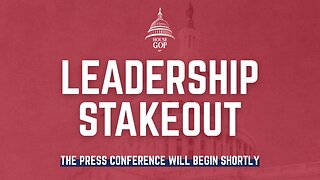 DVR
DVR
House Republicans
42 minutes agoHouse Republicans Leadership Stakeout
293 -
 LIVE
LIVE
Total Horse Channel
12 hours ago2025 Reno Snaffle Bit Futurity | Tuesday
51 watching -
 LIVE
LIVE
JuicyJohns
2 hours ago $0.71 earned🟢#1 REBIRTH PLAYER 10.2+ KD🟢
148 watching -
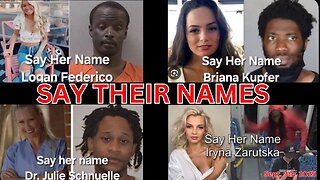 LIVE
LIVE
Wendy Bell Radio
5 hours agoSay Their Names
7,500 watching -
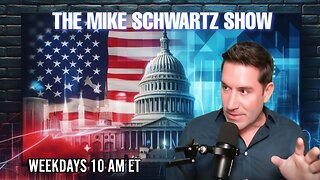 LIVE
LIVE
The Mike Schwartz Show
1 hour agoTHE MIKE SCHWARTZ SHOW with DR. MICHAEL J SCHWARTZ 09-09-2025
2,291 watching -
 LIVE
LIVE
LFA TV
4 hours agoLFA TV ALL DAY STREAM - TUESDAY 9/9/25
4,793 watching -
 1:13:16
1:13:16
JULIE GREEN MINISTRIES
3 hours agoTHINGS THAT WERE BURIED IN YOUR CAPITAL HAVE BEEN FOUND
95.5K180 -
 19:37
19:37
BlaireWhite
1 day agoWe Need To Talk About The Trans Shooter, "Robin" Westman.
12.6K16 -
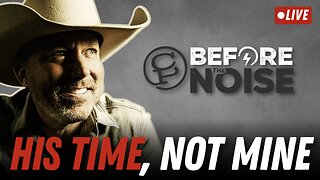 12:22
12:22
Chad Prather
15 hours agoFinding God’s Timing in a World of Pressure
18.9K8